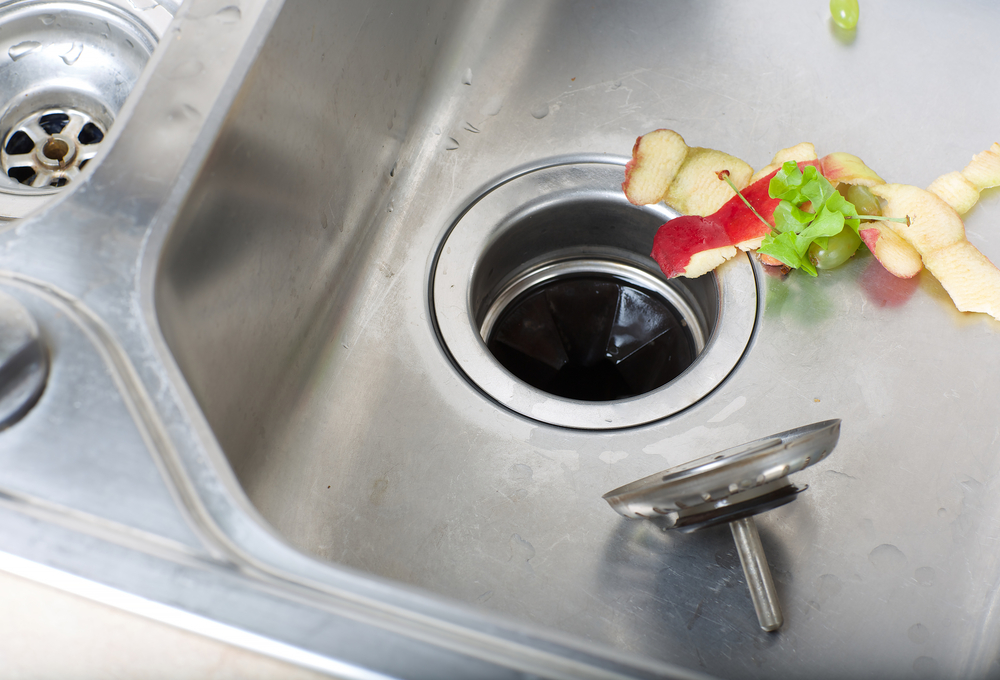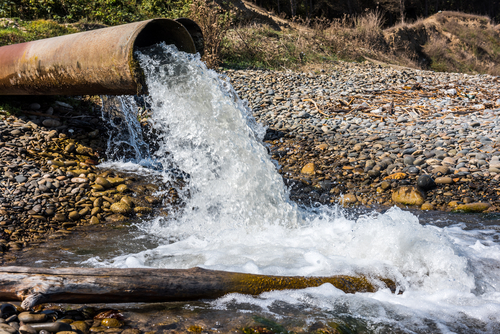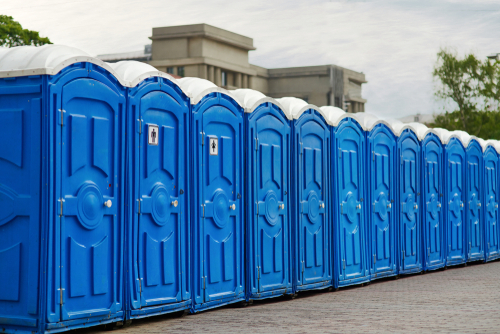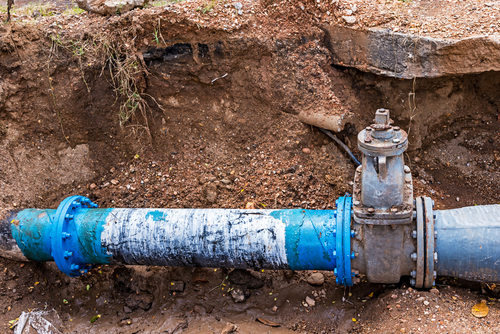In the old days, waste disposal was a matter of life and death, and it seems we have forgotten that learning to deal with human waste was actually the thing that saved the most lives throughout history, and it contributed to longer life expectancy in the 20th century.
Human waste and garbage are a dangerous mix of deadly bacteria, viruses, and poisonous chemicals. Most people carry, inside their gastrointestinal tracts, many deadly “bugs,” which are, fortunately, kept in check by the body’s defenses.
When these bacteria get out of the human body, they can multiply freely in human waste. Sometimes, when this waste is introduced into water supplies, the high concentration of bacteria and viruses will cause sickness and even death.
Human waste is an excellent medium in which bacteria and viruses thrive, and the bad news is that it will often attract various parasites that can carry the disease to other humans. Files, cockroaches, and rats are known to carry diseases such as dysentery, cholera, typhoid, paratyphoid, and the plague.
Waste disposal can be dangerous
When SHTF, waste disposal systems will be one of the first things to stop working, regardless if we’re talking about natural disasters or wars. The reality is that most of these events have causalities caused by improper waste disposal rather than the event itself.
Dealing with waste disposal is not complicated or dangerous if you understand a few basic principles if you make a few preparations, and, most importantly, if you carry out proper procedures.
If, however, you fail to take care in dealing with waste, you may actually survive a nuclear war or other major disasters only to die from a disease that has been all but eradicated by modern waste disposal methods.
The basic rule is simple: keep all waste and pests it can attract away from food and water supplies/sources. Now, let’s see how we can deal with waste disposal properly.
Since the garbage men won’t make their rounds any more when it hits the fan, you could face mounds of trash and garbage that will pile up quickly, especially if a lot of people survived the disaster.
All the trash piling up everywhere will attract pests that will carry diseases and will make even a larger mess, spreading trash everywhere. There is really one single solution here: burn the trash as soon as possible, and the materials that can’t be recycled, reused or burned, must be berried or stored in places far away from human settlements.
This is far from an ideal solution, but it may be the only way to prevent health problems from developing as rodents and insects make homes in the garbage piles. Keep in mind that the fumes and smoke given off when burning certain plastics and materials can be quite dangerous. Even so, these fumes may be less dangerous than the health issues caused by garbage build-up.
The bigger problem, in my opinion, would be dealing with human excrement, which would be generated by a disaster that disrupts waste disposal utilities without killing off a large segment of the population.
Most if not all cities in developed countries have sewer lines that feed into a sewage treatment plant. During a war or other major disaster, the pumps moving effluent (the polite word for liquid human wastes) and sludge (the heavier solid wastes) will be inoperable.
That means that those living in high areas of town may still be able to use the sewer system for a short time—until things get clogged up. However, those in low-lying areas—or the bottom floors of high rises—may see their sewers back up into living areas.
If you happen to live on the lower side of town, you may want to invest some time in learning how to disconnect your sewer line from the city’s system when the time comes.
On the other hand, if you live in a high area of town, you may very well use the sewer to get rid of your waste until the sewer backs up. Chances are it may not back up at your place, but wherever it ends up, it will end up untreated and may cause later problems when it causes contamination and disease in your area.
Waste disposal options
There are various strategies that can be used to make a primitive shelter disposal system workable and bearable.
In addition to human excrement, people generate a lot of wastewater in cleaning up and food preparation. If you are hunkering down In a shelter, getting rid of this water, trash, and garbage can become a crisis.
One of the best waste disposal strategies is to cut way down on the water that you are using in the shelter. You can do this is if you use paper plates, paper cups, etc., and have occupants “lick” their utensils clean and then use them again for the next meal.
Washing hands, cleaning spots off clothes, “spit baths,” etc., can be carried out with “diaper wipes” used to clean babies and available in most grocery stores. These do an excellent job of cleaning and can then be thrown away or treated like dry paper after they’ve been used.
As the garbage goes, you can store it in empty food containers. Even regular cans can be used for storing garbage. By saving the lid, the container can be filled with garbage, the lid replaced, and they can be sealed shut with masking tape or duct tape. Plastic bottles can also be used for storing garbage.
Avoid using glass containers to store garbage since these can easily get broken—with disastrous results if it contains “ripe” garbage.
Non-liquid wastes like paper, dirty rags, paper plates, diaper wipes, etc., can be placed in plastic garbage bags; just be sure rodents or stray pets can’t gain access to them. As soon as possible, these cans of garbage and trash sacks should be buried.
All the material should be buried downhill from your well or other water sources and be under enough soil so that it won’t be dug up by animals. Even more, avoid burying in areas that may be used later for gardening or even farming.
The other big waste disposal problem in a disaster is human excrement.
You can improvise a “restroom,” but it must work efficiently. A pail, bucket, or a portable chemical toilet is simple to create or purchase and—with care—would get you through a major crisis.
You can divide your excrement waste disposal into liquid and solid wastes to simplify storage. It would be wise to have separate buckets for urine and feces.
The pail or bucket for feces should be lined with a garbage bag so that excrement can be easily removed and stored if you don’t have a way to move it into a septic tank or the like.
Don’t let the bag get too full, and remember that most plastic bags aren’t too strong. Excrement bags should be carefully sealed OUT, not too tightly. Feces creates methane gas as it is broken down by bacteria. This gas will rupture a plastic bag that is sealed too tightly.
Store the bags where the smell coming from them will not be coming back into your living area. Be aware of the direction of prevailing winds as well as the intake/exhaust arras of your living area.
If possible, a large hole could be dug outside your shelter, and the excrement bags stored in the hole until they can be buried. Great care should be taken to keep this hole free of vermin. The use of insecticides and a tough cover over the hole is a must.
Make such a pit deep and use the dirt from it to make a trench around the hole so that rainwater can’t drain off the soil surrounding it and into the pit, causing it to overflow. If you’re using such a waste pit in conjunction with a shelter, one of your first tasks, when you can finally leave your shelter, should be to bury the waste from the pit so that it won’t become a health hazard or a breeding ground for pests.
Urine and the water used in cleaning and food processing are initially relatively low in dangerous bacteria (as compared to feces) and could be stored in empty containers that had been full of emergency water supplies.
These liquids could also be transferred via a hand pump or—more ideally—by gravity action into a cesspool or sewer system. Since this will be the bulk of your waste disposal problem, thought should be given to how to deal with this liquid waste.
Using chemical toilets
These are a far superior option than the “toilet bucket,” although some can cost quite a lot while others also require extra space for the chemicals and water they need to function.
If you cannot afford one or if you are dealing with limited space in your shelter, you can mix the best of two worlds. Using a bucket and the chemicals designed for chemical toilets to treat excrement might be the winning solution.
Some preppers are improvising their own chemicals from formaldehyde and methyl alcohol, and rubbing alcohol is also often used.
With the feces bucket, you can use powdered lime or chloride lime to keep bacteria growth under control. Even wood ash and soil will work if nothing else is available.
Ideally, you should place your “bathroom” near the exhaust vent of your shelter to better deal with unpleasant smells.
If you have a source of water, it would be possible to use a standard flush toilet in a shelter if you went to some extra work and added a septic system—or even a crude cesspool—for the stool to drain into.
Cesspools and Septic Tanks for Waste Disposal
When the brown stuff hits the fan, but also after, a cesspool or a septic tank into which you can feed all the waste you are producing would be a tremendous advantage for improving your living conditions, both from a convenience standpoint as well as a health standpoint.
Cesspools were the ancestors of the modern septic tank. The cesspool is better than digging holes for bags of waste—but not a whole lot better.
A cesspool is basically just a deep hole dug 10 or 15 feet into the earth and lined with bricks. The bottom is left open to the earth and covered with a foot or more of layers of sand, gravel, and rock (in that order).
The top of the hole is covered airtight to allow anaerobic bacteria to “digest” waste and to keep surface water out (as well as stray children and animals). All the sewage is drained into this pit via a sewer pipe.
A cesspool is a safe option for waste disposal only if it is well away from water supplies and if it is large enough to handle the sewage coming into it.
If you are dealing with a small population in your household, a cesspool can do a fair job of treating human wastes.
However, you should remember that cesspools are not forever. In time the sludge builds up in them so that they must be abandoned and new ones dug.
Most cesspools will last only a decade or so for a family of four, and the size of a cesspool will depend on how far it is from water supplies and how quickly water is absorbed into the earth.
As a general rule, the size should be at least 30 to 60 cubic feet per person using it.
The septic tank is a better alternative, even if it’s similar to the cesspool. However, a septic tank is made so that the sludge can be cleaned out of it and so that water that has been processed by it is ejected back into the environment more fully processed and made safe (though it is still wise to have the septic tank downhill from water supplies).
Septic tanks generally have one to three chambers. Two-chamber tanks are the most efficient and desirable. The first chamber collects all the waste and uses anaerobic bacteria digestion of the sludge. The second section holds the processed effluent until its chamber is full, then the liquid is automatically pushed out as more waste enters the system.
While in the second section of some tanks, aerobic digestion takes place (these tanks have a vent pipe in the section chamber). The discharge from the second section of the tank is then routed through a pipe into “vitrification beds” of gravel.
The vitrification beds expose the water to the air and sunlight (both of which kill many harmful bacteria) and then allow the water to filter into the earth or a nearby body of water where bacteria finish breaking down any organic wastes in the discharge.
The size of a septic tank depends on the number of people using it. The capacity for a septic tank should be at least 10 to 15 cubic feet per person using the system. Septic tanks are generally constructed of concrete.
The problem with Sewer Lines
The plumber won’t answer your call when SHTF, so it would be wise to have sewer lines leading to and from a septic tank or cesspools placed well away from trees so that the system won’t get clogged up with roots.
For a minimal pipe run, it is also possible to build a “privy” directly over a septic tank.
Both septic tanks and cesspools use living bacteria to break down the household wastes entering them. The less air is getting into the system, the better the bacteria-action in a cesspool and in the first tank in a septic tank. Also, many household chemicals can kill off the bacteria necessary for efficient handling of organic waste in a cesspool or septic tank.
If you are flushing such chemicals into a cesspool or septic tank, the system will fail, and you will render your tank useless.
If you kill the bacteria colony by accident, it is possible to purchase packages of bacteria spores of the type which “digest” wastes in septic tanks. Such packages could save the day and are hardware stores.
Concluding
As you can see in this article dealing with human waste can become quite problematic in the aftermath of a disaster. Your waste disposal systems and toilet facilities can become critical not only for your mental wellbeing but also for your health and survival in general. Hopefully, this article has sparked the interest in researching the subject of waste disposal furthermore and establishing what would be the best approach for you and your family in dealing with this situation when the proverbial brown stuff hits the fan.


























































































Well done, Sir. Sanitation is one of the most important and least discussed disaster issues in public fora. It just isn’t as fun to talk about as self-defense or stockpiling, but how many people apart from infantry veterans have ever dug and maintained a latrine? What are the suburbs going to smell like if the neighbors don’t know how to dig and use one?
I don’t have city sewer, i have septic. At what point will that cease to work.
When it becomes full. How often do you have it pumped now? I also have a septic which I have pumped twice a year. This is probably more often than needed but there it is. You can store things to help the bacteria grow healthy which will prolong the time it lasts when SHTF. Also avoid putting things like bleach down the sink or toilet because they kill the bacteria
I suggest you look at the humanure website. It is an effective way to compost human excrement. The critical factor is to get the compost temperature up to high enough temp for a long enough time to kill the pathogens. It is called thermophillic composting. If done properly, after the second year it is safe for vegetable crops.
Yes, a bucket with a covering agent (like sawdust) and cleaned with soap and water solves many problems. No smell
IMPORTANT to Remember ! ! If you Insist on sending Soap and Chemicals down your Sewer line to the Septic Tank – From Clothes Washers, Dish Washers, Bathing facilities (Shampoo is the Worst), Toilet bowl Cleaners and Blue Dyes, and Any Other “Non-Organic” Waste – Expect your Septic Tank to Never Really get started in an Anerobic Process. I send ALL of my Non-Organic “Stuff” to a “Soap Separator” – a 4 Cu.Yd. pit filled with rock aggregate. I flush it out twice a year with Irrigation water runoff. A typical house with two bathrooms needs a 750-1000 Gallon Septic Tank.
P.S. My Septic Tank NEVER Needs to be “Pumped Out” !
A gray water system and a composting toilet will also work, given the right setup. Pick your soap and shampoo to be biodegradable, use that water for gardening. Urine is a decent fertilizer, dilute at least 7 to 1. The composting toilet uses moss, but many folks substitute leaves. The ‘ compost’ is not safe for gardens, but it’s excellent for trees. This turns hazardous waste into plant food.
for most newer subdivision type housing developments there is no ” uphill or downhill” gravity feed – it’s a wholly connected series of street parallel pipes that eventually connects to an electric-powered “:lift station” >>> some stations have a backup generator or eazy to connect auxiliary power source …
what needs to be remembered is that the majority of municipal water supply is gravity feed – and will continue much longer than the sewer system – means a full system of sewer pipes connected to homes that won’t be pumped out and will eventually have to back up somewhere >>> be ready to plug ALLL your drains in the home – even a one-way flow back eliminator isn’t 100% guaranteed under those conditions ….